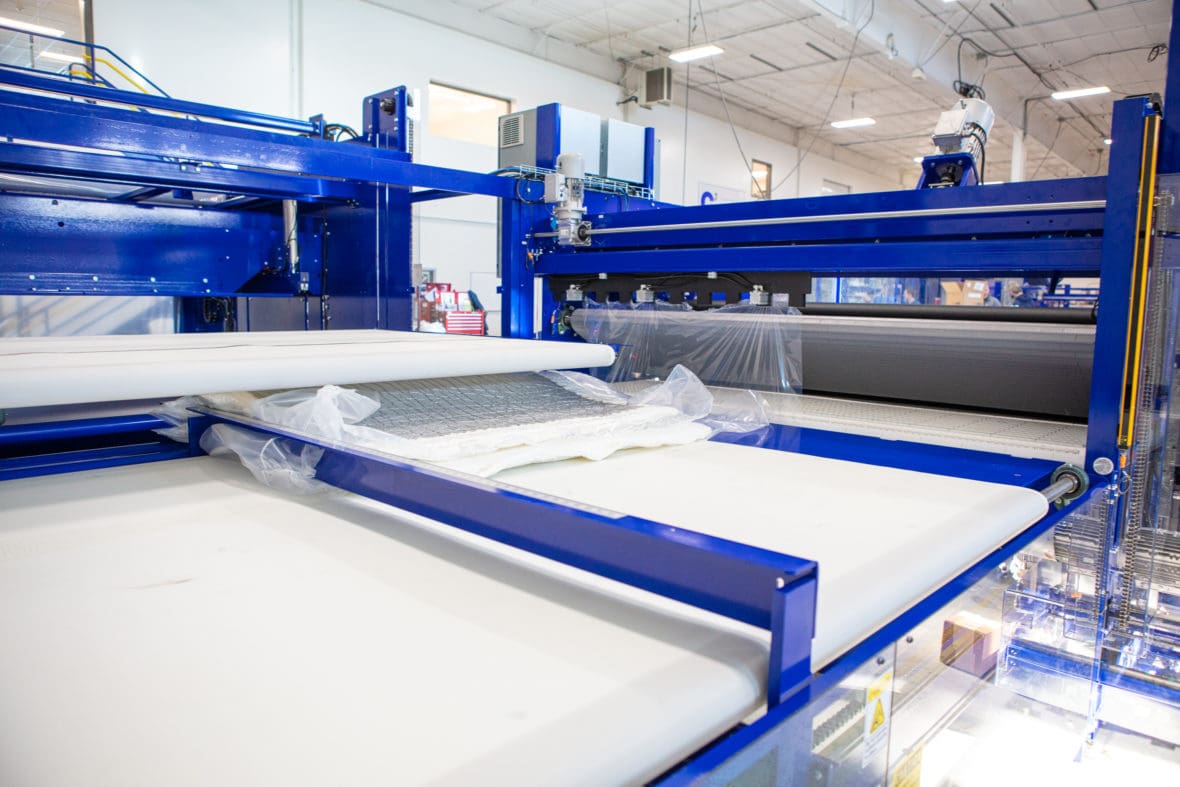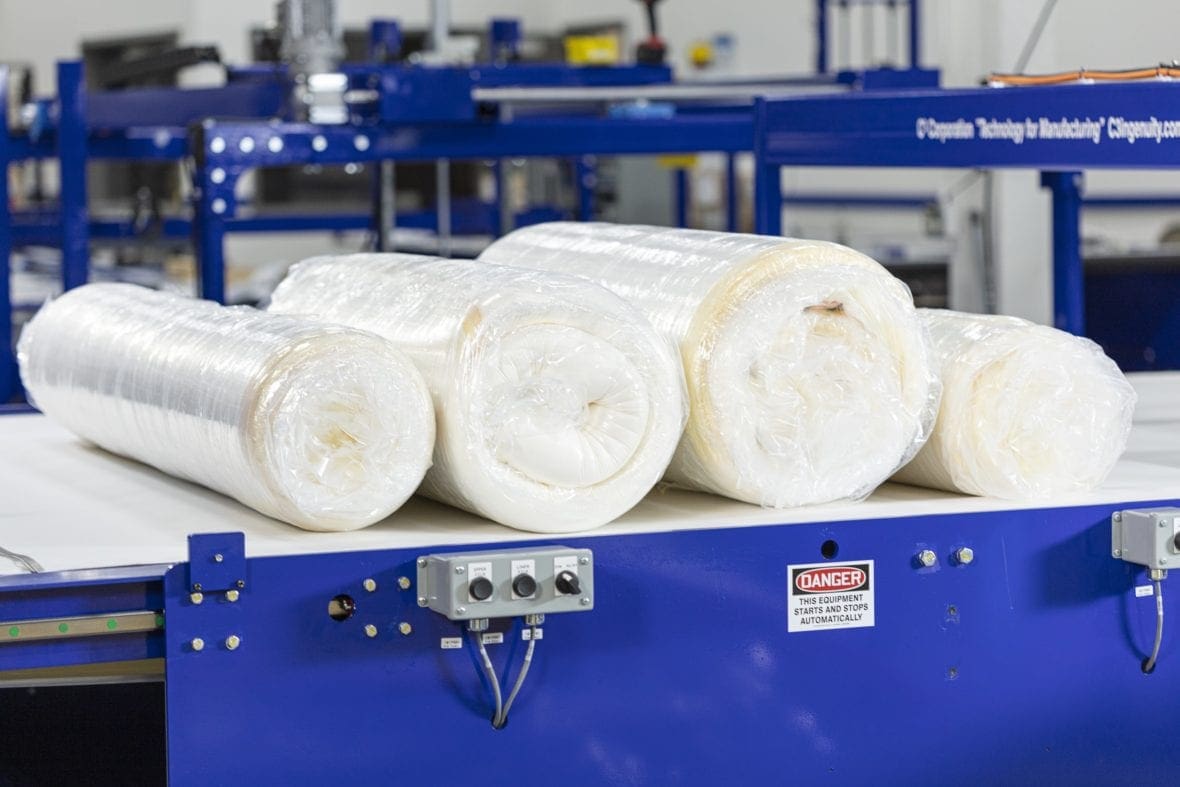Rolling a mattress into an attractive package requires the right amount of finesse during the compress-and-roll process. Too forceful, and you run the risk of damaging the product or machine. Too gentle, and you’re probably missing out on compression potential. But when you find the right balance, you produce consistent, securely rolled mattress packages that will make a great first impression on your customers.
C³ compression machines achieve their finesse by separating the packaging process into distinct, efficient steps. We first accomplish the majority of the compression with the press, leaving the roll cage to simply shape the product into its final package size. Separating these steps protects more robust mattresses and the machine from damage and allows the roll cage to produce an appealing final product.
In this edition of STANDOUTS, we’re giving you a closer look at what occurs when a product is roll-packed on a C³ machine and how it impacts the end product. Watch below to see what makes our roll cage design stand out!
To consistently achieve the ideal roll pack shape at a rate of 2+ units per minute, C³ compression machines follow a very specific sequence. Here’s how it works.
1. Square The Product As It Moves
Transferring product into the roll cage can be tricky if not done properly, as it plays a critical role in achieving consistent packaging lengths. Our solution to keeping the product square as it enters the roll cage starts with the fold section’s exit pusher. This pusher holds the product’s edge flush as it moves through the stretch film curtain and into the roll cage, regardless of whether the product is folded or not. This method keeps the edges even as it’s rolled and prevents the mattress from telescoping in the roll cage.

2. Secure With A Smooth Wrap Of Stretch Film
Next, the product passes through the stretch film curtain into the roll cage. One of the hallmarks of a C³ package is it’s neat, clean stretch film finish. Our design accomplishes this by allowing operators to customize the number of wraps, wrap speed, and tension of the stretch film in the recipes. Adjusting these settings keeps the film taut and allows you to secure the package with the least amount of film necessary.

3. Hold The Diameter And Shape The Roll
Whether you’re using a standard cage or variable cage, the rollers hold to a set diameter for each recipe. When the product enters the roll cage, it works its way around the cage’s perimeter before it rolls in on itself. By allowing the product to fill the roll cage from the outside in, we avoid nipping the leading edge, and any additional compression gently distributes itself across the package.

Machine variables such as the amount of stretch film, wrap speed, product diameter, and tension are adjustable for each product recipe. As always, we start by using our roll cage calculator to determine the smallest viable product diameter for each client’s packaging needs. Through testing, we then refine the other variables until our end result is a securely wrapped product with a clean stretch film finish in under 30 seconds.
Do you have a product you’d like to test on a C³ compression machine? Contact us today, and our team will work with you to determine the best packaging solutions for you.
